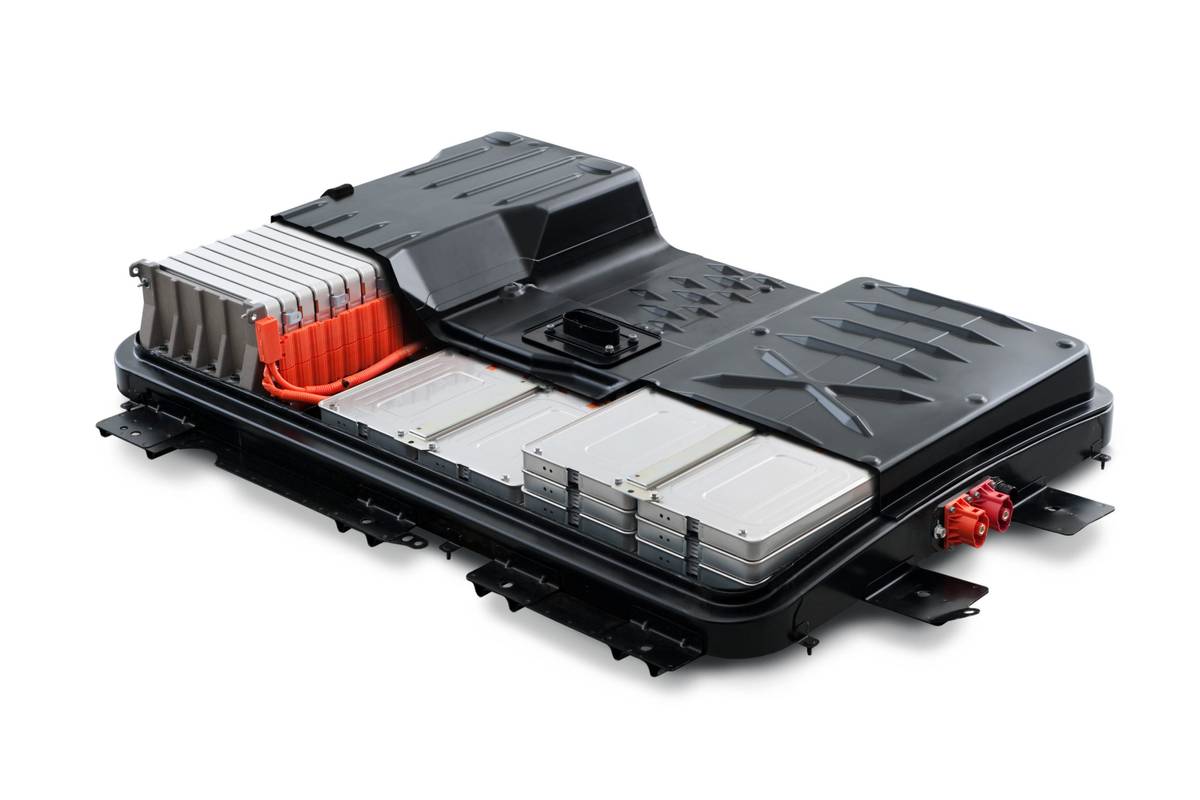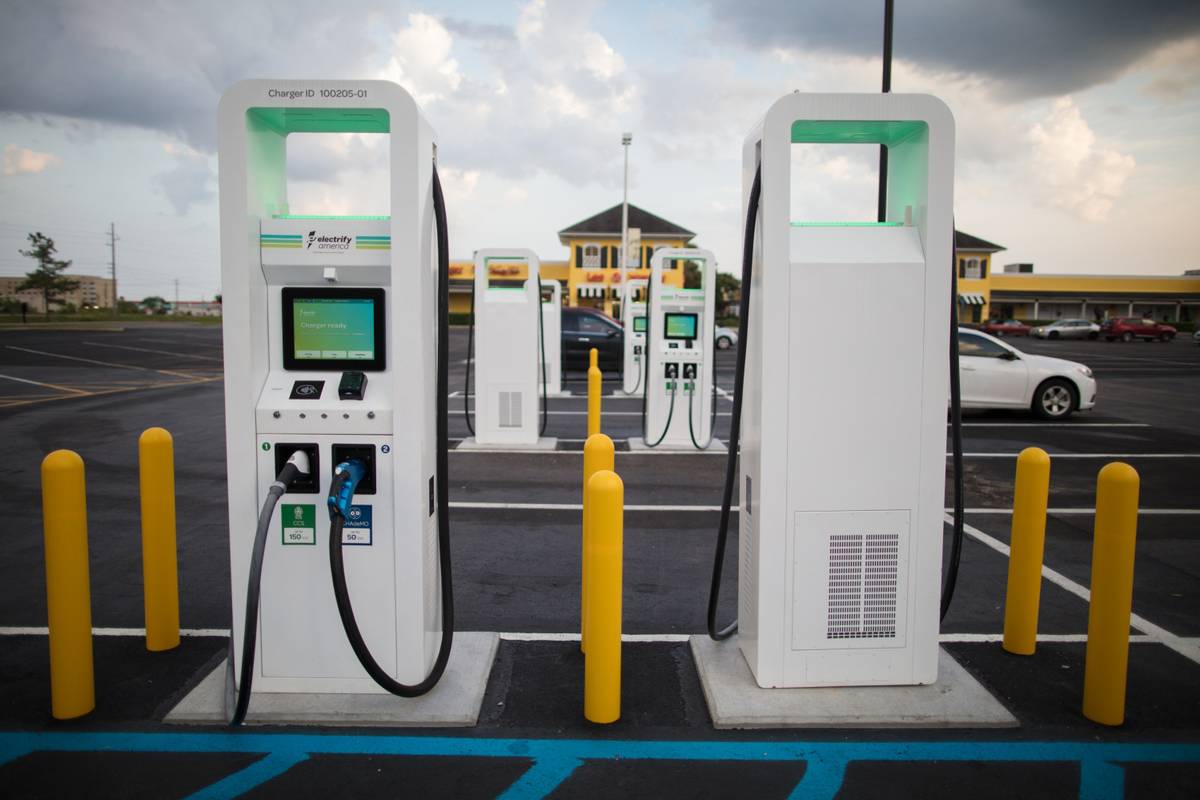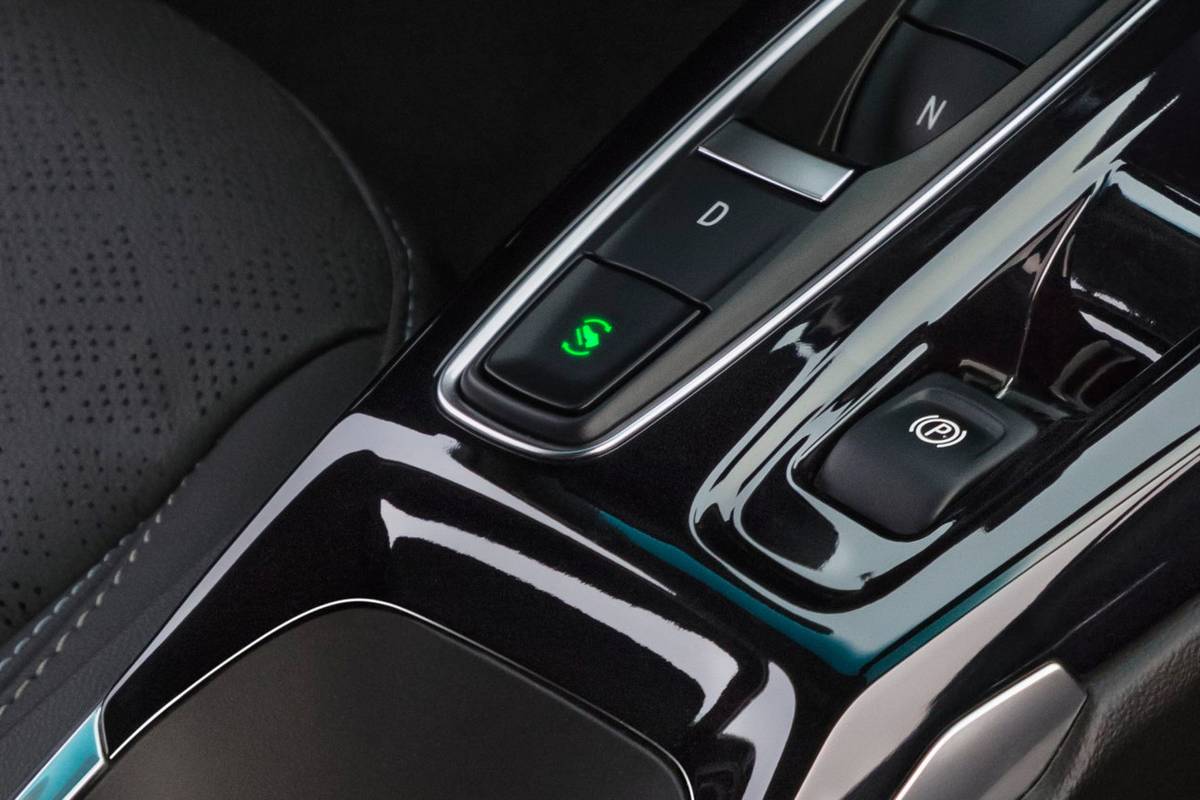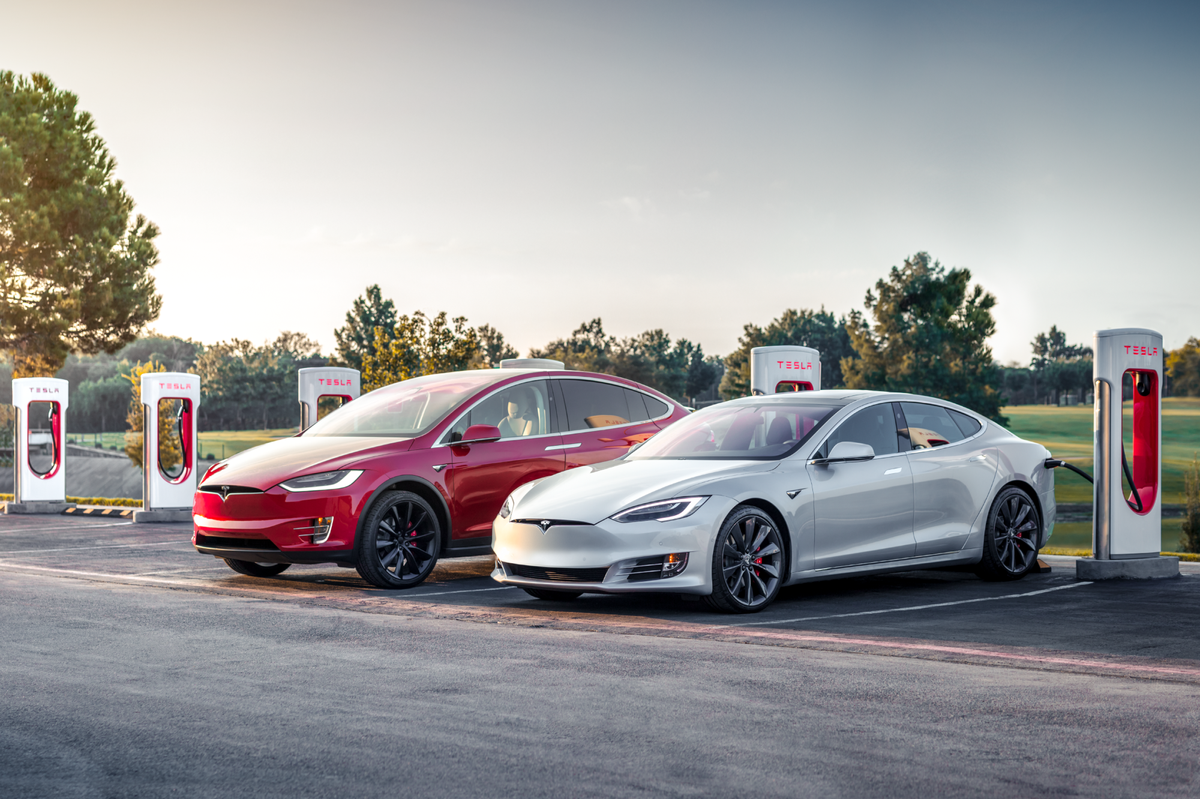NEWS

Cars.com illustration by Paul Dolan
Electric vehicles have their own terminology — some colloquial, some technical — that can be mysterious and confusing to the uninitiated. Knowing what these terms mean is key to deciding not only whether an EV is right for you, but also choosing which EV is right for you. For example, do you care how fast your car accepts gasoline from the pump? No, but you’ll need to know how fast your car, and home, can replenish a battery to take advantage of home charging, and there’s no standard answer. But we can get you close through an understanding of terms about charging, and more, in Cars.com’s EV glossary.
alternating current (AC)
alternator
amps
battery pack
battery cell
battery module
Combined Charging System (CCS)
charger
direct current (DC)
DC fast charging
destination charging
drag coefficient (Cd)
EVSE
frunk
inverter
J1772
kilowatt (kW)
kilowatt-hour (kWh)
Level 1, 2, 3
mpg-e
range
regenerative braking
Supercharger
traction motor
volts
alternating current (AC)
The form electricity takes in the grid and in homes and other structures
With alternating current, electrons regularly reverse direction. The relevance of AC in the world of EVs is that all batteries require direct current (DC), in which electrons always flow in the same direction, so any time a vehicle is charged, AC has to be converted, or rectified, to DC.
In Level 1 and Level 2 charging, a component hidden in each EV called the charging module is responsible for this task, along with controlling the charging rate. In public DC fast charging, the charger is external and feeds DC directly to the car’s battery, bypassing its onboard charging module, which is a choke point for current flow. The DC fast charger starts with almost twice the household voltage and rectifies the AC externally using bulkier components than a car could accommodate. These are the two reasons DC charging can be so much faster than Level 2.
Alternating current gets its name because the current changes direction, which it does 60 times per second in the U.S. It’s difficult to grasp what this even means, and it’s even more baffling when you dig deeper and learn that when the current reverses, it technically goes from positive to negative in the same conductor. But AC has advantages over DC, such as minimal losses during transmission over long distances, as well as the fact that transformers can be used to increase or decrease its voltage. Ironically, most electric cars use AC drive motors so, yes, the battery’s DC has to be converted back to AC again, a process called inversion, to propel the vehicle. In fact, hybrids typically use AC motors, which means current is literally constantly being converted either from AC to DC or back. Every time these conversions happen, be it in the car or outside, there are energy losses associated.
Conventional gasoline- and diesel-powered vehicles employ belt-driven alternators, which are AC generators, even though all electrical demands are DC.
alternator
A type of generator that produces alternating current
In all conventional modern cars, the gas or diesel engine drives an alternator via belt to generate the electricity that keeps the starter battery charged and powers lights, electronics and other electrical components onboard. Nowadays, literally all of these devices require direct current, which makes a type of generator that produces only alternating current seem an odd choice, but alternators are the generator of choice because they’re smaller, lighter and more durable, mechanically, than DC generators – three of the criteria automakers are maddest about. This has been the case roughly since the 1960s, when solid-state rectification — conversion of AC to DC — became viable. Alternators incorporate such rectifiers and voltage regulators to ensure the proper voltage in DC.
amps
Short for amperes, a measure of electric current that electric car owners are most likely to encounter when setting up Level 2 home charging
Level 2 means 240 volts, but the amount of power delivered to the car also depends on the current flow, which varies widely among Level 2 chargers. To use the classic plumbing analogy for electricity moving through a wire, voltage represents the pressure forcing water through a pipe, and current is the rate of water flow as determined primarily by the diameter of the pipe. To get more water out of the end of the pipe, you can increase either the pressure or the pipe’s diameter. The same is true with electricity: Increase the voltage or the current (amperage) to get more power (measured in watts) at the other end of the wire. Not unlike the pipe, a larger-diameter wire presents less resistance and allows more current flow.
Amps are the unit of measure for the electric service a home can distribute from the electric utility — such as 50, 100 or 200 amps — and the current a given circuit or Level 2 charger can pass.
battery pack
The complete power-storage component in an EV or hybrid, including individual battery cells along with supporting electronics and, typically, thermal management provisions
The cells in a pack, regardless of type, are typically grouped into modules, which add structure and simplify replacement of faulty cells. Packs include a battery management system that tracks the pack’s state of charge and monitors cell voltages and temperatures. Packs contain their own fusing and a means of manually disconnecting from the rest of the vehicle for service. Contactors (heavy-duty relay switches) are usually present, especially in pure battery-electrics, to isolate the battery from the vehicle if it fails an onboard safety test or if a collision is detected.

2011 Nissan Leaf battery pack | Manufacturer image
Battery-electric vehicles rely on circulating liquid to manage battery temperatures, with the exception of the Nissan Leaf (pack shown), which has no active thermal management. In most such packs, there are channels through which coolant (usually a mix of water and a conventional antifreeze) courses and then exits the battery to be conditioned either in a simple radiator or a heat exchanger connected to an air-conditioning or heat-pump circuit.
battery cell
The smallest component of a battery pack, of which hundreds may be required to achieve the voltages needed to serve a hybrid or electric car
Like any other individual battery cells, these are good for only a few volts apiece. (What we call a battery with higher voltage, like a 12-volt car battery, is itself a collection of separate cells in a case — in this example, six cells.) Lithium-ion battery cells come in three basic types, which is to say three shapes: cylindrical, prismatic and pouch. The cylindrical batteries that power some EVs look so much like something you could put in a flashlight that you might think them unsophisticated. Detractors said as much about their packaging efficiency because their shape leaves space in between, but Tesla seems to have done just fine with this type for most of its history, though the brand is now dabbling in prismatic cells, which are shaped like a deck of cards or a candy bar. The style of choice among most other EV manufacturers has been the pouch, which looks like a mylar Ziploc sandwich bag that’s practically empty. Unlike the other two styles, the floppy pouch relies on a battery module for structure.

Chevrolet Volt battery cell pouch | Manufacturer image
battery module
A structural subset of an EV’s battery pack into which battery cells are divided and contained for monitoring and, if necessary, replacement
Because the voltage of a battery cell measures in the low single digits, dozens to hundreds of them are employed in electrified vehicles, grouped in cases that provide structure (especially important for pouch cells) and simplify wiring. Each module typically gets its own voltage and temperature sensor and has just two terminals regardless of the number of cells wired together within, which depends on the manufacturer’s design. Typically, modules include isolated channels through which coolant flows to manage the battery pack’s thermal state.
Combined Charging System (CCS)
A nearly universal (except for Tesla) U.S. market EV charging connector that combines the J1772 AC connector with two conductors for DC fast charging in one compound port
Where early Japanese-sourced electric cars relied on a separate connector called CHAdeMO for DC fast charging, nowadays most new EVs that include the capability (apart from Tesla, which has its own connector) provide this compound CCS port. When searching for public-charging options online or via app, owners of these cars must select J1772 for Level 2 charging and CCS for DC fast charging.

Combined Charging System pistol (left) and car port | Cars.com photos by Joe Wiesenfelder
charger
See EVSE.
direct current (DC)
The form electricity takes in batteries and in most electronic circuitry
With direct current, electrons flow in one direction. The primary relevance in the world of EVs is that electricity is transmitted in the power grid in the form of alternating current (AC), so any time the car’s battery is charged, AC has to be converted, or rectified, to DC. With Level 1 and Level 2 charging, the car itself accomplishes this with an unseen component called the onboard charging module. DC fast chargers start with almost twice household voltage and rectify the AC externally using bulky components often hidden away from the charging area before feeding the DC directly to the car’s battery, bypassing its onboard charging module, which is a choke point for current flow.
Though some EVs use DC drive motors, most use AC motors, meaning the vehicle has to convert the battery’s DC into AC to accelerate — and back again upon regenerative braking. Both rectification and inversion, which is the name for DC-to-AC conversion, result in inefficiencies, but automakers that choose AC motors are thinking about the performance and efficiency of the vehicle overall, not just one component or process. For what it’s worth, even a conventional vehicle relies on AC through the use of an alternator, which is a generator that produces alternating current, even though direct current reigns throughout the vehicle.
DC fast charging
A type of public charging that can charge compatible vehicles many times faster than the quickest Level 2 AC charger by feeding higher voltage DC directly to the battery pack. Tesla Superchargers are DC fast chargers.
As EVs exist today, DC fast charging is best for occasional charging when time is short (e.g., when taking a long trip or running low on range). “Fast” is in the name, but EV beginners won’t find DC charging fast compared with filling a gas tank, which can provide hundreds of miles of range within a few minutes. Automakers’ DC fast-charging claims generally involve 30-minute sessions, but this seldom represents a full charge. Though automakers increasingly include some free DC fast charging with purchase of a new EV, almost all acknowledge that frequent fast charging will compromise the life of the vehicle’s battery pack. When there is a cost, fast charging is more expensive than public Level 2 charging, usually enough to eliminate the cost benefits of electric motoring with home charging.

Electrify America charging station | Manufacturer image
Both DC fast chargers and the three-phase AC power they require make them prohibitively expensive for home installation. The power they deliver ranges from 24 to 350 kW, but there’s no guarantee that the EV, regardless of its own acceptance specification, will charge at that rate.
destination charging
A newer name for public Level 2 charging where EVs can be parked long enough to add appreciable miles
Popularized by Tesla, the term destination charging is meant to distinguish slower away-from-home charging from DC fast charging (or Supercharging, in Teslaspeak).
drag coefficient (Cd)
A measure of a vehicle’s resistance to the air through which it passes
The sleeker shape of current vehicles reflects an aerodynamics movement begun decades ago, in part, to improve fuel efficiency. Drag, no different from a stuck parking brake or any other form of resistance, works against the engine or drive motor’s effort. The higher a vehicle’s drag coefficient, the harder its motor works and the more fuel it uses, be it gasoline, diesel or electricity.
A vehicle’s coefficient of drag is influenced not just by its size and shape, but by the surface of its underside and how high above the ground it sits. Ground-hugging vehicles tend to be more aerodynamic, which is why modern vehicles with active suspensions are often designed to lower themselves automatically at highway speeds. It’s no mistake that the most efficient vehicles on the market — typically hybrids and electrics — are hatchbacks because the high rear section is inherently more aerodynamic than a traditional sedan or coupe shape with a trunk that drops back down sharply from the roofline. Vehicle designers work in wind tunnels trying to shave hundredths of a point off of future models. Having gone as far as they can with overall shapes, engineers have turned their attention toward airflow around wheels, into and over engine compartments with active grille shutters and past exterior door handles, which increasingly retreat flush with the side of the body. Side mirrors are a long-standing target that would be replaced by cameras if not for federal and state regulations that require mirrors by name.
EVSE
Electric vehicle service equipment (or supply equipment)
An EVSE is what we typically call an electric car charger, be it the supplied trickle charger cord or a more robust Level 2 unit you might install at home or find at a public “destination” charging station. The reason for the different name is that, in electronics, the name charger is technically reserved for the component that manages battery charging and, if necessary, converts AC to DC. The EVSE does neither of these things. Each car has an onboard charger, which you can’t see, filling these roles. The EVSE is primarily a safety device that protects both you and your vehicle from harm, incorporating little more than a ground-fault circuit interrupter, some switching and circuitry that communicates the amount of power it can provide to an EV.
Whether it has a J1772 or Tesla connector, 240 volts is a lot to be holding in your hand, especially if you’re outside in the rain. The EVSE won’t provide high voltage to the cable until the connector is attached to the EV. Once it’s inserted, the car can detect the EVSE’s pilot signal, which indicates how much power it can provide. Then charging can commence and the EVSE throws a heavy-duty switch, called a contactor, which energizes the cable. You can usually hear this contactor click. Similarly, if you go to remove a connector from an EV, the moment you press the release button, both the car and the EVSE will shut off charging so there’s no danger.
frunk
A contraction of ‘front’ and ‘trunk’ representing the front trunk that eliminating a front-mounted internal-combustion engine often makes possible in EVs
Like the name itself, frunks tend to amuse and satisfy people, and they can add versatility to a vehicle, but they aren’t always an advantage. We remind shoppers not to lose sight of the vehicle’s overall cargo capacity. For example, by Cars.com’s measurements, the Volkswagen ID.4, which has no frunk, provides more cubic feet of storage volume behind the backseat than its competitor, the Ford Mustang Mach-E, when its frunk and rear cargo volumes are combined.
inverter
An electronic component that converts direct current into alternating current
Inverters are crucial elements in electric cars, as well as in most hybrids, because the overwhelming majority of electric motors used in both vehicle types are AC while batteries are always DC, making the conversion necessary through a traction inverter, so named because its sole task is to create AC to power an AC traction motor. The term inverter has also proliferated due to Ford’s use of the technology in its Pro Power Onboard option that powers 120- and 240-volt outlets in the beds of 2021 F-150 hybrids (and, next, F-150 Lightning EVs). This system can provide AC power from the hybrid battery pack alone, though a low charge state will cause the hybrid truck’s engine to start. Pro Power Onboard recalls so-called inverter generators, backup generators that similarly generate AC, rectify it to DC and then invert it back to AC. It seems daffy, but it’s this redundant conversion that allows inverter generators to run their engines at variable speeds based on load — a more efficient, quieter approach — leaving the production of AC to the electronics. Conversely, conventional generators are actually alternators that must run at a constant speed (full speed and maximum output, essentially) just to maintain a consistent 60-hertz AC cycle.
J1772
The SAE International standard that governs EV charging, but also the name for the type of charging connector on most non-Tesla EVs and chargers in the U.S.
J1772 isn’t a very good name for one of two ubiquitous connectors on EVs and chargers in the U.S. (the other being a proprietary Tesla connector), but it appears as a selection if you input “ev charging stations” into Google Maps or use any charging-station-finder app. Technically, J1772 is only for Level 1 and Level 2 charging. J1772 forms the basis of the Combined Charging System connector, which adds two conductors below it for DC fast charging. (This allows a DC-charging-capable EV to have one compound charging port rather than two separate ones, which was the case with earlier Japanese EVs fitted with the CHAdeMO DC port.)
Ironically, the more complex version of the J1772 connector got the simpler name, CCS. But anything’s better than the name CHAdeMO.

J1772 connector | Cars.com photo by Joe Wiesenfelder
kilowatt (kW)
The measure of power used throughout EV charging and operation, equal to 1,000 watts, and an alternative measure of motive power equal to 1.34 horsepower
Watts are the root unit, but we go with kilowatts because we’re always dealing with amounts above 1,000 when discussing EVs rather than light bulbs. Kilowatts are important because they’re a final product among electric units — the product of voltage and current. So when you’re talking about kilowatts, you don’t have to wonder about variables like you do with the other units. For example, Level 2 chargers are all 240 volts, but unless you know their current rating, in amps, you won’t know how many kilowatts you’re delivering to your EV.
Though we’re accustomed to using horsepower for internal-combustion engine ratings, the kilowatt is fundamentally a power rating, too, because it has a time component built in (1 watt = 1 joule per second), so each can be converted into the other. (In fact, horsepower and watts are both products of James Watt, an 18th century Scottish inventor.) Though it’s not as common, now that electric and internal-combustion forces are combining in the same vehicle, engine readings are sometimes presented as kW for consistency.

2021 Jeep Wrangler Unlimited 4xe | Cars.com photo by Joe Wiesenfelder
kilowatt-hour (kWh)
The unit of measure both for battery capacity and for the energy used to charge that battery, or to operate an EV or any device that consumes that power over time
Boiled down to its basics, 1 kilowatt-hour is the amount of energy it takes to operate, for example, a space heater that consumes 1 kW for one hour’s time. Or it’s the amount a 6-kW motor would consume in 10 minutes. Though it’s tempting to conclude that an electric car with a 70-kWh battery would cause your electric bill to increase 70 kWh each time you charge it, it’s not quite that simple. For one thing, there are always losses when charging — energy lost as heat both in the circuitry and especially as the car converts the grid’s AC to DC and charges the battery. On the flip side, you won’t often be charging a completely empty battery — and most EVs and plug-in hybrids don’t use their full battery capacity as advertised; this is the difference between a battery rating measured in gross (total capacity) or net (usable capacity). One of the keys to maintaining battery health is not to charge or discharge them fully, which the onboard software is programmed to manage. Even if your EV’s battery charge display reads fully charged or empty, there’s probably a buffer above or below that doesn’t register.
Level 1, 2, 3
Level 1 and 2 represent charging at 120 and 240 volts AC, respectively, and Level 3 is a misnomer for DC fast charging.
We published a detailed explainer about charging levels, mainly because we take issue with them. Level 1 represents trickle charging, which isn’t of much use to battery-electric EV owners. Level 2 suggests it’s a single thing when really it could represent charging a car completely in a couple of hours … or taking all night to do so. Level 3 technically doesn’t exist, but DC fast charging does.
mpg-e
Miles per gallon-equivalent, an excellent means of comparing the efficiency of battery-electric vehicles to each other, if not to gas-powered ones
The EPA’s mpg-e rating isn’t very useful in comparing plug-in efficiency to that of internal-combustion vehicles because it doesn’t account for cost differences between the two fuel types. But it’s great for comparing one battery-electric to another and better than nothing for plug-in hybrid electric vehicles (PHEVs). Maybe.
Peruse the EPA’s ratings for new and used EVs, and you may notice that efficiency has been a strength of Tesla models versus comparable competitors. It’s easy to assume any vehicle that plugs in must be efficient, but that’s not the case, and in plug-in cars, higher efficiency translates to longer range for a given battery capacity and more range added for the same charging period.
We’re less enthused with the EPA’s approach to rating PHEVs because the mpg-e rating combines electric and gas together. This means there are already two variables, and the distance over which this pairing travels for the purposes of calculating the rating is an arbitrary third one. Suffice it to say the PHEV should be rated for its mpg-e in electric-only mode rather than a combination of a high electric mpg-e rating and a low hybrid mpg rating that achieves the official EPA spec at one point in a journey but may be higher before that or lower thereafter depending on the vehicle’s electric range — yet another variable.
range
The distance a plug-in vehicle will travel — or is projected to travel — on electric power before its battery charge is exhausted
Plug-in vehicle range is always an estimation, whether it’s the manufacturer’s claim, the EPA’s estimate or the remaining distance displayed on a vehicle’s instrument panel. The same is true of gas-powered vehicles, as are many of the points below, but it never mattered as much with the abundance of range — and quick refueling — liquid fossil fuels represent, so we never paid attention before. Some EVs do better than others at showing the range variability and how one can exceed or fall short of the range estimate depending on conditions and driver actions.
Range is diminished by aggressive driving, high speeds and the use of accessories like lights and especially cabin climate controls, but weather has the most dramatic effect: Slick roads affect range somewhat, but it’s cold temperatures that hurt the most by robbing battery capacity and gobbling up juice for electric cabin heat. One AAA study marked the decrease at about 40% range loss when comparing the average EV at 20 degrees Fahrenheit versus 70 degrees. (Preheating or -cooling the cabin when still plugged in helps somewhat.)
EV shoppers in colder climates need to consider this effect along with two other important factors: the fact that they’re likely to be charging at home each night and should be focusing on miles per day, not per “tankful,” and that it’s normal for EVs to lose some range over time, just like any other rechargeable device. Experts put the amount at roughly 20% by the time the car is at the end of its warranty period — usually eight to 10 years or 100,000 miles.
regenerative braking
The means by which all hybrid and EVs essentially recycle energy, using their inertia when coasting or braking to turn the drive motor, which serves as a generator to recharge the battery pack
Often called recuperation by German automakers, regenerative braking has been a hallmark of EV and hybrid efficiency since the GM EV-1 (to count actual products), and its effectiveness has only increased with more sophisticated computer control, which is the heart of regen. Fortunately, the way regenerative braking feels to the driver has also improved, but it’s seldom as linear and satisfying as conventional hydraulic brakes, often accompanied by mushy brake pedal feel. One of the challenges engineers have faced is providing a smooth transition between regenerative and conventional braking when the regen has reached its limits — as in harder braking — and conventional brake pads or shoes must engage the discs or drums.
A major upside to regenerative braking is that it’s frictionless, meaning the pads and shoes last much longer, requiring less frequent replacement than conventional cars. Another benefit is that the level of regeneration, and thus the braking strength when you lift off the accelerator, can be adjustable, and many EVs now give at least a couple of settings — though some have odd paddle-triggered modes that are temporary. The strongest trend is one-pedal driving, whereby lifting off the accelerator brakes hard enough to trigger the brakelights — making the brake pedal itself necessary only in a panic stop for full-threshold braking.

2022 Chevrolet Bolt EV one-pedal driving button | Manufacturer image
It’s due to regeneration that a more powerful (quicker) EV can also be comparatively efficient performance vehicle, unlike its gas-powered equivalent. Larger, more powerful drive systems understandably add weight, which hurts efficiency, but in an EV, a more powerful drive motor also represents a higher-capacity generator for regeneration, so at least it gets some efficiency back.
Supercharger
Tesla’s name for DC fast chargers
Though the word is borrowed from the world of internal-combustion engines, Supercharging has come to represent DC fast charging for owners of Tesla vehicles. The Supercharger network is the most mature fast-charging network in the U.S., with sophisticated automated payment that competitors are attempting to catch up with through the Pay & Charge standard. Though it has always been a Tesla-only resource, CEO Elon Musk Tweeted in July 2021 that the network would be opened to other brands by year’s end.

Tesla Model S (left) and Model X at Supercharger | Manufacturer image
traction motor
Another name for an electric drive motor
Though the term technically represents any type of motor that propels a vehicle, in today’s cars, traction motor has come to mean an electric motor. It might seem unnecessary to designate an electric motor in a vehicle as a drive motor, but not all motors — even in the powertrain — drive the wheels, at least not directly. Some motors or motor-generators are part of a hybrid system but aren’t primarily responsible for powering the wheels. Similarly, mild hybrids use belt alternator starters (aka starter-generators) that can contribute to the vehicle’s propulsion, but the term traction motor is typically reserved for the larger (or largest) motor or motors that power the wheels directly.
volts
A measure of electric potential, difference and electromotive force, but voltage is best understood through the plumbing metaphor as a measure of pressure
For such a universally recognized term, voltage is a mystery — partly because it’s not always meaningful absent other specifications, such as amperage. So we’ll attempt to clear up some common confusion about volts in the world of EVs and charging. First off, when you see mention of household voltage of 120 volts, that’s the same as 110 volts, 115 volts or whatever you grew up with. The voltage in your home is a nominal specification, meaning it can be higher or lower than 120 volts with no consequence, depending on how much electricity your utility is generating and you and your neighbors are consuming. The same is true of 240 versus 220 volts. We use the higher number because that’s how manufacturers specify their vehicle charging times, and if we say 220 volts when they actually used 240 volts (which is faster), we’re giving them unearned credit.
One of our biggest beefs about EV tech is that Level 2, a charging designation, represents 240 volts, but voltage is only one factor — the pressure — and in U.S. residences, it’s the maximum. So if the pressure is constant, there’s still the question of current, or flow, in amps to determine the power, in kilowatts, available at the end of the line. The amp ratings of Level 2 chargers vary widely.
When it comes to vehicle batteries, the familiar starter battery has a 12-volt rating (though a healthy one measures more than 13 volts, driving home that “nominal” thing). Mild hybrids are usually 48 volts, full hybrids average around 200 volts, and 400 volts has been a common nominal rating for pure battery-electric cars, though some manufacturers have begun to double it. Brands like Porsche, Hyundai and Kia say this is primarily in the interest of faster DC charging, which requires higher-voltage public chargers. Whether such devices will be able to step down to charge 400-volt EVs is yet to be determined.
More From Cars.com:
Cars.com’s Editorial department is your source for automotive news and reviews. In line with Cars.com’s long-standing ethics policy, editors and reviewers don’t accept gifts or free trips from automakers. The Editorial department is independent of Cars.com’s advertising, sales and sponsored content departments.
